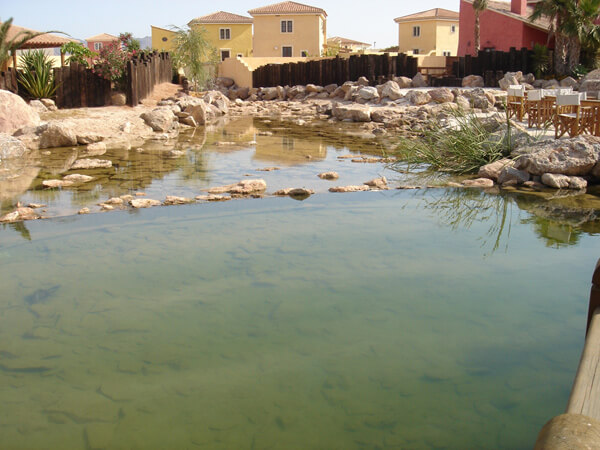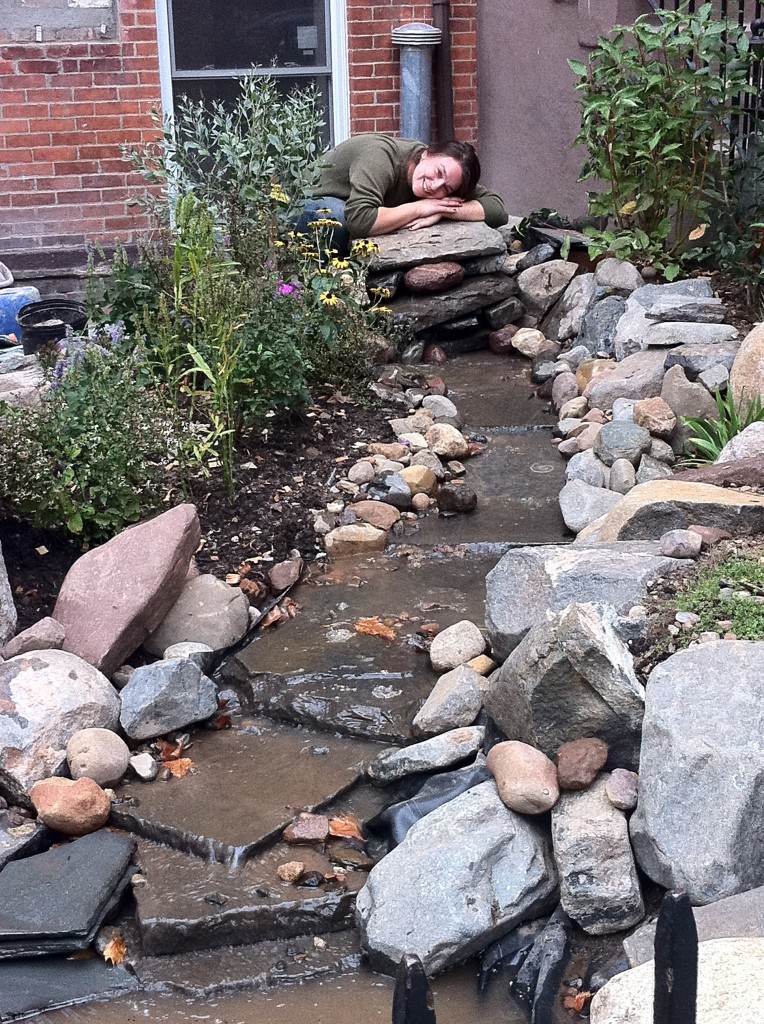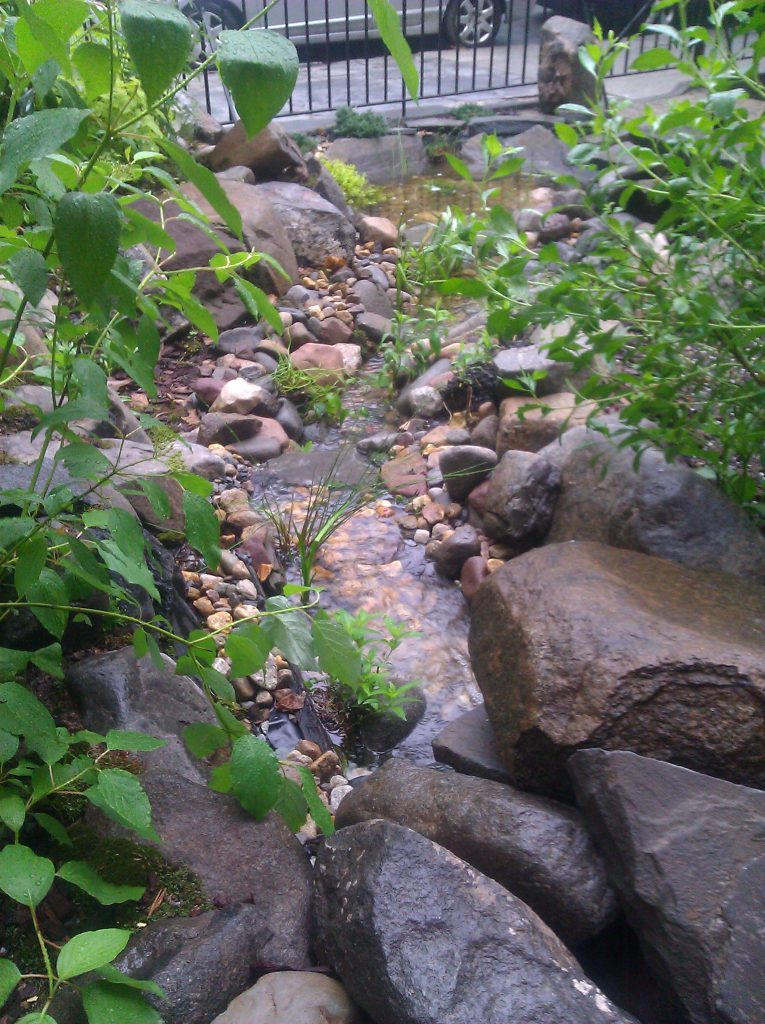We have been experimenting a lot with self sustaining garden ponds lately. One thing is to build a pond that looks like a black bathtub with half dead plants and a goldfish, another thing is to create a diverse ecosystem that thrives.
The trick is to design it right. And they will come.
The bugs, plants, birds and bees will all migrate to the site naturally if you create the correct back bone for them to build their homes.
The industry standard is to build with PVC or EPDM linning. The first one is PVC and all the nastiness that entails. The second one is like a rubber inner-tube. Less toxic but still not natural.
We are looking into using clay as the liner, or more technically Sodium Bentonite. After all, that is what most naturally occurring ponds are lined with.

Clay is a wonderful material and in our NY green contractor work Eco Brooklyn loves applying it to walls. Almost all our jobs have clay, usually on the exposed brick party walls of the brownstones. We apply it like plaster in a myriad of ways depending on the look we want. Amazing stuff.
This morning I spoke with Joe Carmo, the local distributor of a product called Bentomat, an industrial version of clay for lining ponds. They have a great product where the clay is sandwiched between two liners, making it easy to apply. The cost is about $1/sq.ft before shipping.
The only problem is their minimum order is over 2,000 square feet and that weighs 3,000 lbs.
So yes, they supply liner for big ponds. For example here is one in China under construction with the product:

The finished “pond” will look like this:

Little New York City green builders like Eco Brooklyn on the other hand want to build water features like this:


By installing a natural pond in New York city gardens you create ecological diversity where there previously was little. With our focus is on converting New York city front and back yards into little ecosystems in a sense we help reverse them to what they may have been several hundred years ago.
And clay lining is a big part of this plan. We’ll shoot out a blog when we find a way to source smaller quantities of this more ecological lining. It may mean buying Sodium Bentonite and figuring out a way to adhere it to a mesh….but we are still exploring.
We will keep you posted. It promises to be exciting! At least for us.
